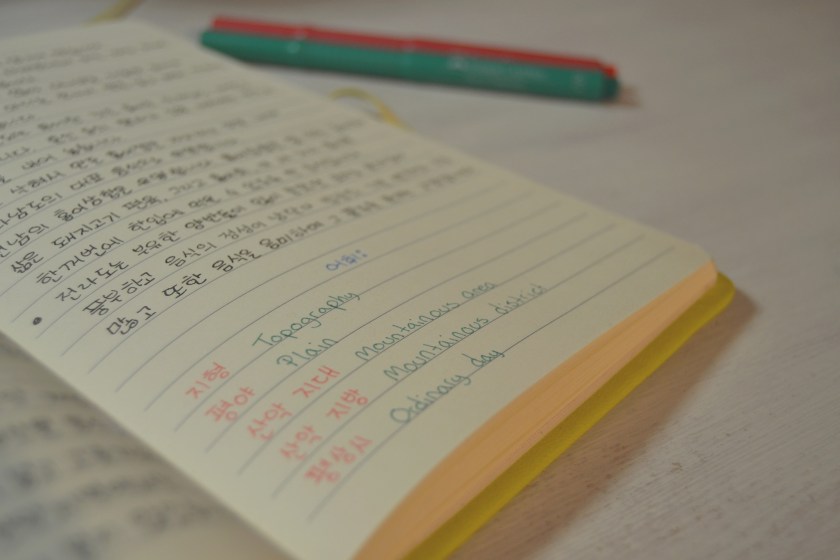I have talked about how reading in your target language can approve your language skills a few time before so I’ll try not to repeat myself today. You might find this and this helpful though!
Instead I would like to introduce you all to the Ridibooks reader app. Ridibooks is a Korean ebook website with a huge variety of books to chose from. Everything from Manwhas and self improvement books, to fiction, history books and magazines. They even have free books right here – No more excuses!
I have mentioned the site before and no I’m still not sponsored or anything. Just a genuine fan!
Lately I have been reading ebooks more often than I used to and honestly, I still prefer physical books. However, I have come to really appreciate ebooks and especially the ebook reader that ridibooks offer, which is why I’m now here to give you guys a tour of this great tool, from a language learners aspect!
When you open the app, you’ll find the books that you have downloaded on the device that you are using. There’s not much to say about this as it is pretty straightforward.
At the bottom of the screen you’ll find a little menu.
Right now we a at the first icon 내 서재 (My library).

The next icon is 구매 목록 (Purchased books). This shows all of your books, including those that you haven’t actually downloaded on your current device. From here you can download the next book you would like to read. (or re-read)
As you can see from the pictures, I have a few books that I haven’t downloaded because I read then via my laptop, before I got my studybuddy (My tablet).
The next icon is 서점 (Bookstore). If you click here you get transferred to the ridibooks website where you can take a look around for new books. This too is pretty straightforward.

The 4th icon is 검색 (Search). This is also pretty straightforward. You simply search for whatever book you are interested in and then it’ll redirect you to the website if they have the book you searched for. I never use this to be honest as I feel like it makes more sense to just go straight to the webshop.

Okay, so enough of the standard boring stuff lol.
If you click on a book from you library it’ll open on the page that you where on the last time. You can also add your own bookmark by clicking on the icon in the upper right corner, but I have never experienced that the app doesn’t automatically saves the page so I haven’t used that feature in years. I guess I’ve gotten lazy.. 그냥.. 귀찮다 ㅎㅎ
Anyway, this is the page that I was on when I took the screenshots a few days ago, in a book called 말 그릇. I’ve talked about it on instagram but I think this is the first time that I’m mentioning it on the blog. You can find it here if you’re curious.
Okay this is where all the fun stuff happens!
At the bottom of the screen you can see how far along you are with the book which is always fun and next to that you have a 듣기 (listening) icon. It’s not an audio book though so I don’t really use that function, since it’s just a typical ‘robot’ reading.

The next icon is 목차 (Table of contents). You can see how far you are along and you can also use it to skip to a certain chapter if you wish. I sometimes use it as a shortcut if I want to re-read a certain part of a book.

The third icon is 동서노트 (reading notes).
This. Is. THE. Best. Feature!
Okay so let me explain. When reading an ebook through this reader, you can mark a word from the text and a list of new features will appear.
The first feature is 형광펜 (Highlighter), which works just like a physical highlighter. You can use this feature to highlight any word or sentence that you find useful or that you need to remember.
The next icon is the purple dot. The color of the dot indicates what color you use to highlight with and if you tap on the dot, a variety of colors will show up, allowing you to easily switch back and forth between colors. In other words you can do color coding! Use one color for new vocabulary, another for new grammar points and a third color for names and locations. It also gives you the opportunity to underline a word instead of actually highlighting it. Whatever you need!


The next feature is 메모 (Memo). By clicking on memo you’ll get a little box where you can add.. well. A memo.. To the word that you have marked. It could be the definition or maybe a sample sentence using the highlighted word. It so cool! And yes this genuinely makes my little geeky heart excited.
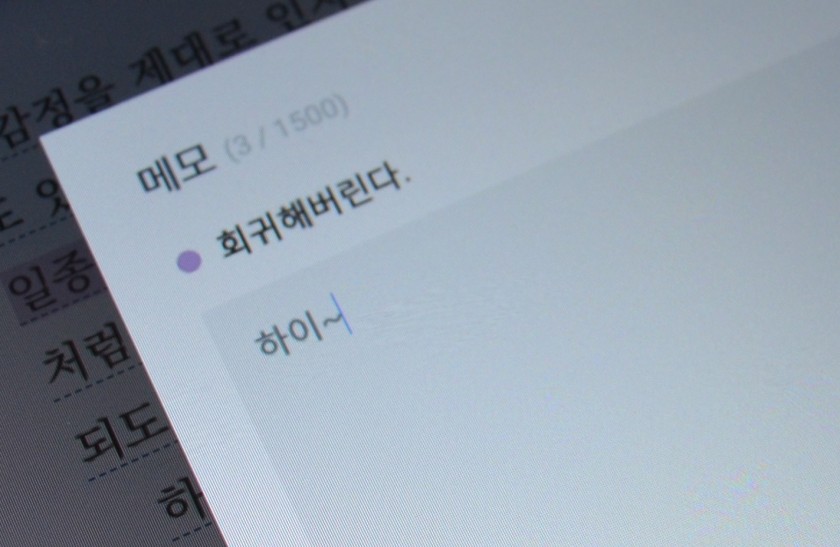
If you chose to add a memo, then you get a little symbol by the word to remind you that you added something to it.
The next icon is 듣기 and it works just like the 듣기 at the bottom of the screen, except it only reads the part that you have marked.
If you tap at the 3 dots next to 듣기, then you’ll get two more options called 검색 (Search) and 공유 (Share).

Search is probably my favorite feature. It you tap the search button then the app will connect you to Naver Dictionary. This means that you can look up words straight from the book without ever leaving the app. Once you’ve gotten the information that you needed, you simply tap the arrow in the upper left corner and you be back on the page you where reading.
It’s just so freaking convenient!

As for the share option, it’s not at all a necessity but I really really love it! If you tap the share button, then you get two alternative ways of sharing it.
The first one is 이미지로 멋지게 공유 (Share as a cool picture) and 텍스테로 공유 (Share as text). I love the picture option. If you come across something inspiring or noteworthy then you can immediately create a beautiful quote picture, which can then be uploaded from the app, straight to you social media accounts.
Again, not at all a necessity, but still really cool!


Okay, so that was all of the options that appear when you mark a word. Now let’s get back to the 동서노트 (reading notes) icon at the bottom of the screen. It you tap the reading notes icon, then you get a list of all the additions you made to the page. In my case, you can see that I highlighted new vocabulary with the purple marker, and now every single word that I have highlighted has been added to this long vocabulary list. If you do color coding then you can also make it show the words or sentences that are highlighted with a specific color. You can also access the memos that you make from this page.
I use the feature really often to create online flashcards via memrise or quizlet. I simply copy and paste the words.
You can also use it to track your progress. Try accessing a list from a book you read a year ago, and see how many of the words you know now. It’s a lot of fun!
If you wish to delete a note from the list, you simply tap the three dots next to the note and choose 삭제. Super simple!

It’s also possible to change the font size, colors and so on, you simply tap the 보기 설정 icon. You can adjust pretty much everything you want to.

As I mentioned in the beginning of this post, I still prefer hard copies and writing my notes in hand, but you literally have any tool you might need for language learning, through this reader. I use it on a daily basis because it’s just too convenient not to, especially on days where I’m out and about or traveling. I totally recommend giving it a try if you are learning Korean!




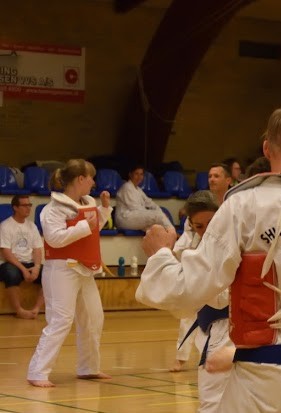





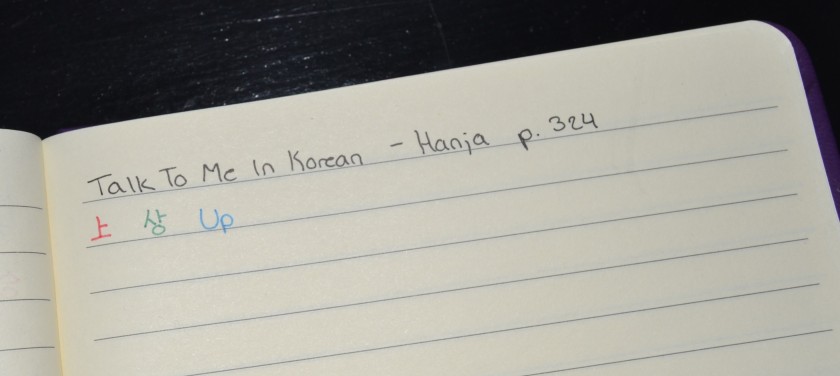
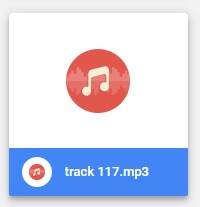


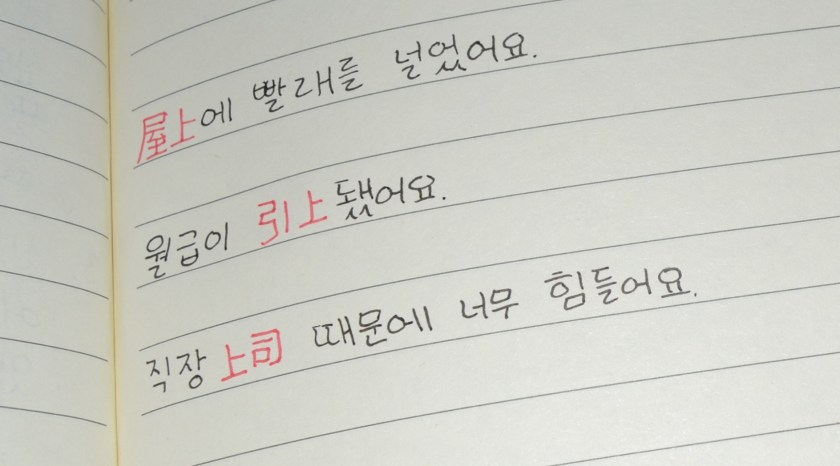




















 After reading the dialog and following up on the vocabulary, the real fun begins. A grammar pattern from the dialog is introduced and followed by a few sample sentences that allows you to become more comfortable with that specific pattern.
After reading the dialog and following up on the vocabulary, the real fun begins. A grammar pattern from the dialog is introduced and followed by a few sample sentences that allows you to become more comfortable with that specific pattern.








